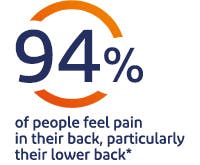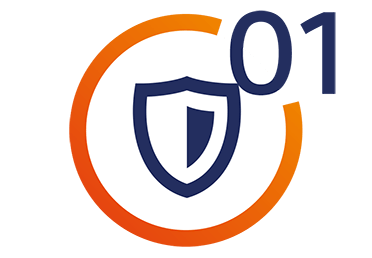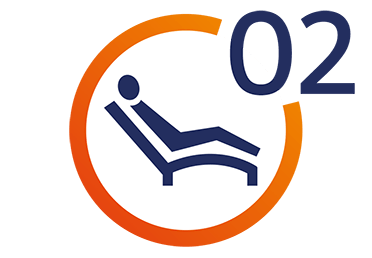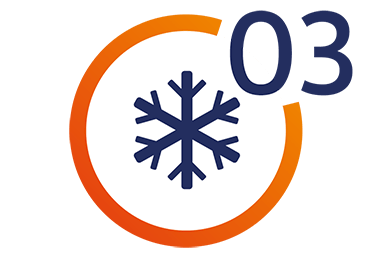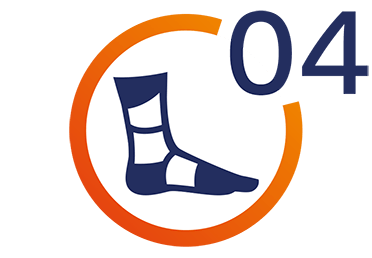Symptoms of muscle pain
Tenderness and pain are symptoms of injured muscles and may be felt when you’re moving or resting.
When a muscle is injured, inflammation can cause pain and swelling. You may feel tenderness when the muscle is moved or touched.
01
Your muscles might hurt even when you are resting, or only when you use the injured muscle.
02
Muscle pain may be so mild that it hardly bothers you – or so severe that you can’t use the muscle at all.
03
How muscle pain can affect you?
Suffering from muscle pain can be distressing and limit your ability to move freely. Almost everyone experiences aching muscles from time to time, which can make doing everyday things like getting out of bed, climbing stairs and lifting things painful.
Did you know?
The origin of the word myalgia (muscle pain) was coined in ancient Greek, deriving from myos "muscle" and algos "pain”.
87% of people feel that their pain impacts negatively on their quality of life.*
*GSK Global Pain Index Research 2014 – full report p. 26
Why do we experience muscle pain?
Muscle pain is most commonly the result of overuse or a minor injury, perhaps caused by a tough game of tennis or a trip or fall, or by tension and stress, which can make your muscles stiff and painful.
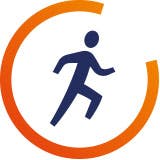
Overdoing it can cause muscle pain
Muscle pain, usually affecting a few muscles or a small part of your body, is often caused by overuse or minor injury, for example a strain or sprain resulting from overdoing it on your morning run. Trips or falls can also lead to strains and sprains that cause muscle pain.
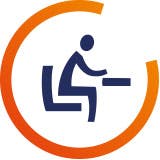
Stress and muscle pain
Another frequent cause of muscle pain is stress. This is because when you feel tense, your body produces hormones that make your muscles tense up and increase your sensitivity to pain. That is why your back might hurt more after a tough day at work.

Colds can cause aches and pains
Pains and aches in muscles throughout your body may be caused by an infection such as common cold.
Expert treatment
Muscle pain often gets better within a few days. You can use painkillers and anti-inflammatory medicines from your pharmacist to help ease the pain, either taken orally or applied directly to the skin over the muscle. If muscle pain becomes severe and too difficult to bear, a specialist may be able to help. He or she may advise you to do specific body exercises to rehabilitate the muscle. Your doctor may also order imaging tests such as an X-ray, MRI or CT scan, as well as blood tests, to rule out underlying conditions.

How to treat muscle pain:
Explore our range
Find out how our products can help
Discover the Voltaren product range to find the right product to treat your pain.
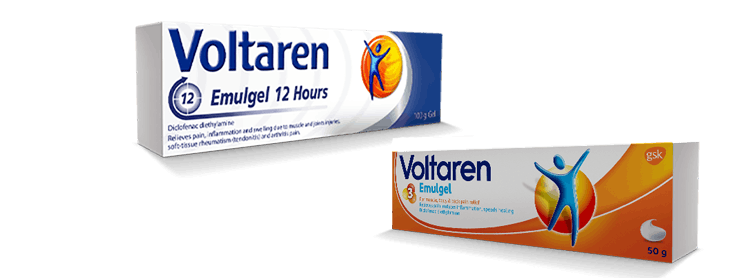
Learn more
What is inflammation?
Learn all about the processes that cause inflammation, why it happens and how it can make our bodies feel.
read moreLearn about your body and how it changes as you age
Find out how your body works, changes you may experience as you get older, and how to deal with age-related body pain.
read moreMovements to ease back pain
Movement can be the best way to help ease your back pain. Here are some tips to help you keep active.
*Global Pain Index Summary Report 2014. Available: www.global-pain-index.com. Last accessed 20th April 2016.
Read More